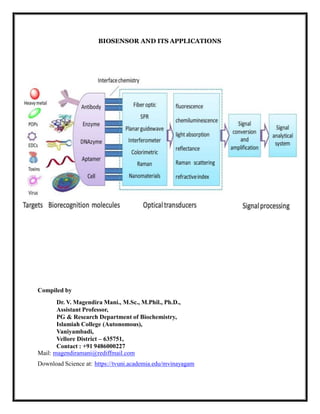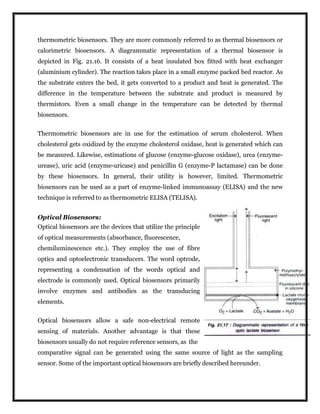This document provides an overview of biosensors and their applications. It discusses the basic components and principles of how biosensors work by using an immobilized biological material like an enzyme to interact with an analyte and produce a measurable signal. Some key types of biosensors described include electrochemical biosensors like amperometric biosensors, potentiometric biosensors, conductometric biosensors, thermometric biosensors, and optical biosensors. Specific examples like blood glucose biosensors, lactate biosensors, and biosensors to detect urinary infections are also summarized.










